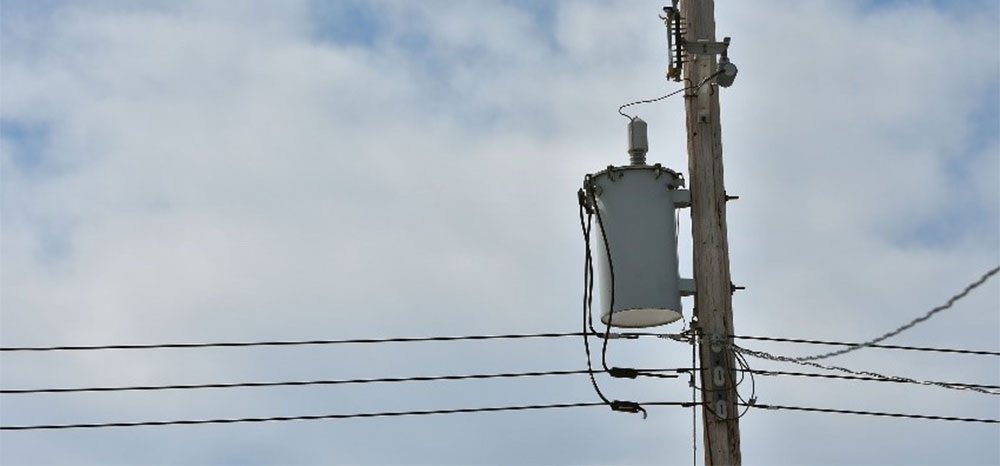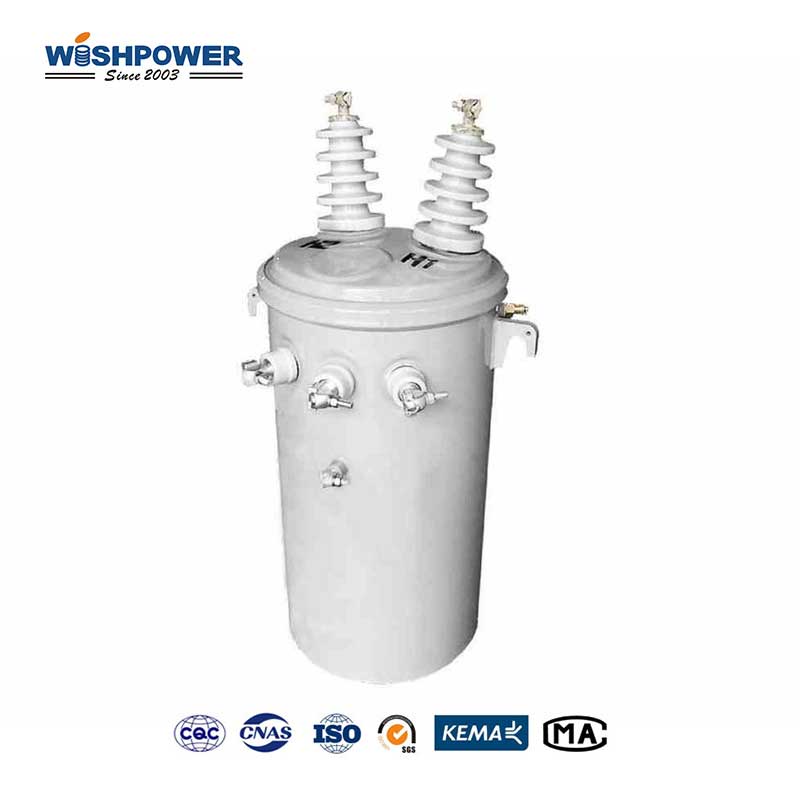With the emphasis on today’s energy-conscious planet, power distribution systems are designed to be very efficient. The transformer is one of the most common and used electrical equipment for voltage conversion. Single-phase pole-mounted transformers are commonly used in suburban or rural areas due to their simplicity, cost-effectiveness, and efficiency. However, how energy-efficient are these transformers?

What is a single pole-mounted transformer?
A utility-mounted single phase pole mounted transformer is an electrical transformer designed to step down high-voltage electricity from the distribution grid to a lower voltage suitable for homes and businesses. Usually used in a single-phase residential or light commercial with a lower load than industrial use, these transformers are also available in three phases.
Energy Efficiency
We define the energy efficiency of a transformer as the ratio of secondary to the primary side its energy transferred and hence the energy efficiency of a transformer is the ratio of the output power to input power. An energy-efficient transformer means less power is lost during operation and therefore less energy is used.
Single-Phase Pole Mount transformer efficiency ratings
Single-phase pole-mounted transformers have efficiency ratings in the range of 98% to 99%. This high efficiency is the result of advanced engineering techniques that minimize power losses by:
Hysteresis and Eddy Currents are types of core losses.
It is a high-quality laminated steel transformer core to minimize energy loss into the medium of heat, via hysteresis (reluctance) and eddy currents. Such losses are inherent to all transformers but can be minimized by appropriate choice of core material and construction techniques.
Copper Losses
When current passes through the transformer the windings create resistance, which amounts to copper losses. Further reducing these losses is possible by using high-quality copper wire and optimizing winding design.
Leakage Reactance
Leakage reactance is induced by the incomplete coupling of the magnetic field to the core. A lower leakage reactance means higher efficiency. Although core and winding configurations present themselves as the best solutions for suppressing leakage reactance, they do not fully exploit the potential in modern designs.
Efficiency Improvement Strategies for Loss Reduction
Using High-Quality Materials
Minimizing energy losses is critically dependent on the choice of core materials, yardage, and winding wire. Low losses and long-lasting durability are ensured with high-quality silicon steel sheets and more conductive copper or aluminum wire.
Improved Cooling Systems
Transformer inefficiency is mostly due to overheating. Single-phase pole transformers have lost their popularity partly due to this, and through the effective use of oil-based or dry cooling systems, single-phase pole transformers can eliminate overheating and maintain their operating temperature to improve energy efficiency.
Transformers optimally sized
Transformers can be undersized or oversized and can suffer inefficiencies. High no-load losses occur for oversized transformers when they operate while excessively small transformers may have difficulties maintaining load demand, incurring then higher operating losses. Opportunities for optimization in efficiency exist if sizing is based on the expected load.
Single-Phase Pole Transformer Efficiency Factors
Efficiency and load conditions
Different loads that a transformer is subjected to will make the efficiency of a transformer vary. At rated load, or at least near it, transformers are most efficient. But at low loads, they may have higher losses especially core losses which are much more constant load level dependent. That’s why transformers must be sized properly so they will be running efficiently under different conditions.
Ambient Temperature
The major role played by the surrounding environment in transformer efficiency. Overheating of the transformer increases with high ambient temperatures, decreasing transformer efficiency. Higher core and copper losses, associated with transformers operating in extremely hot areas, translate into a loss in overall performance.
Ageing and Wear of Transformer Components
The efficiency of single phase pole mounted transformers may decrease as key components such as insulation, core, and windings wear, and age. Such losses can be prevented, and their occurrence avoided, through regular maintenance as well as timely replacement of worn components. This also guarantees that the transformer operates satisfactorily according to an optimum level for its service duration.
Energy Losses and Environmental Impacts.
Single phase pole mounted transformers are highly efficient but there is some amount of energy loss during their operation. Due to this loss, operations costs are increased, and the environment is also impacted. On the other hand, although there have been significant reductions in impacts from conventional technologies, recent advances in transformer technology relying on more energy-efficient materials and topology have helped reduce environmental impacts.
How energy-efficient are single-phase pole-mounted transformers?
In summary, single-phase pole-mounted transformers are energy-efficient devices, that help to provide power availability and cost-effectiveness. These transformers, with efficiency above 98% are designed to minimize their losses using advanced materials, optimized designs, and cooling mechanisms. With the aspect of considering ambient temperature, load conditions and regularly carrying out maintenance these transformers will not only be efficient but also maintain efficiency in all these parameters throughout their service life. For years to come, transformer technology will get better and even better, reducing transformer losses and keeping them economically and environmentally beneficial.
If you have different opinions or want to know more, please leave a message on the website or contact us directly at info@wishpower.net















